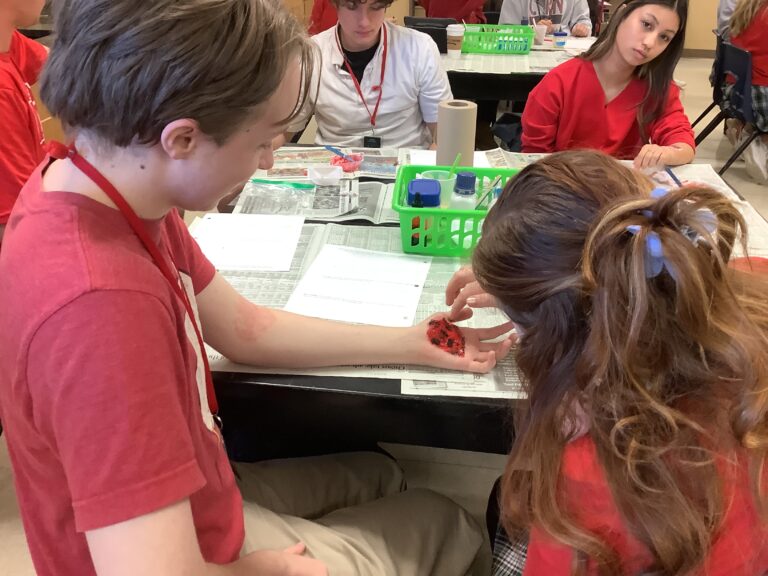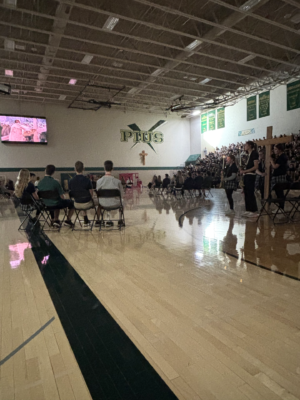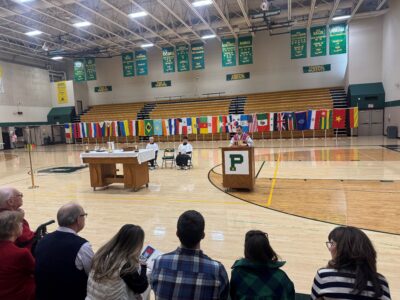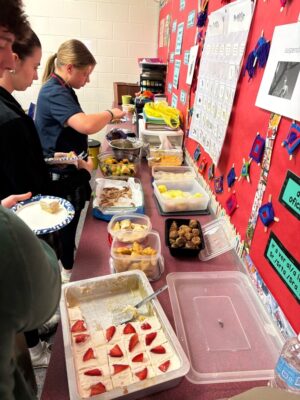Anatomy and Physiology classes created fake wounds on Halloween.
The Anatomy and Physiology students completed the lab activity to better their understanding of the integumentary system.
“The whole purpose of this project is to learn about the different types of wounds and burns, and to study how they heal,” Anatomy and Physiology teacher Jenna Steenson said.
The students used common household items to create their realistic wounds.
“We made a 3rd degree burn wound by mixing up mixtures of glue, cocoa powder, red dye, and toilet paper,” senior Cate Dolezal said.
The lab activity spanned over the course of two days in the classroom. Prior to creating the wounds, students were required to complete a research assignment.
“Before this, we did a whole activity where we had to read about the type of wound we made,” junior Sean Becker said. “From that we were able to both learn about how to make our fake wound and what exactly caused the wound.”
Every year this lab is enjoyed by both Anatomy students and teachers.
“I definitely prefer this hands-on learning for Anatomy. It’s a lot more fun and it’s a lot more engaging,” Becker said.
Steenson enjoys seeing the creativity of her students in the work they create.
“I just love to see every year how the students make more unique and better wounds. It’s exciting to see their creativity,” Steenson said.
This nontraditional style of learning benefits students academically as well.
“I feel like when you get all of your senses involved in learning you learn better,” Dolezal said.
Steenson believes the project serves as an educational brain-break.
“This really activates (students’) excitement and gets them engaged in the material,” Steenson said. “We study a lot of material quickly and they really earn the opportunity to do something like this.”







